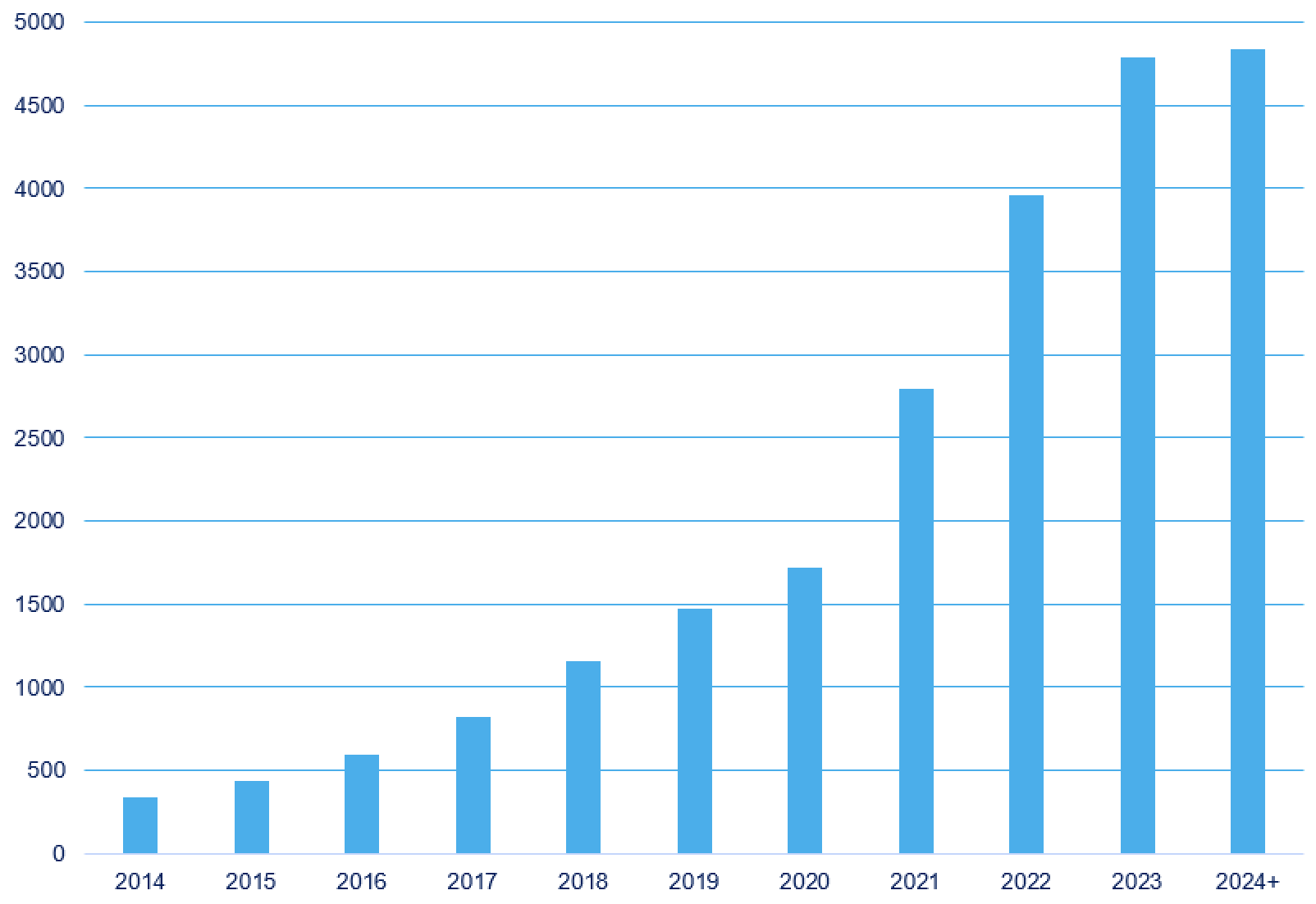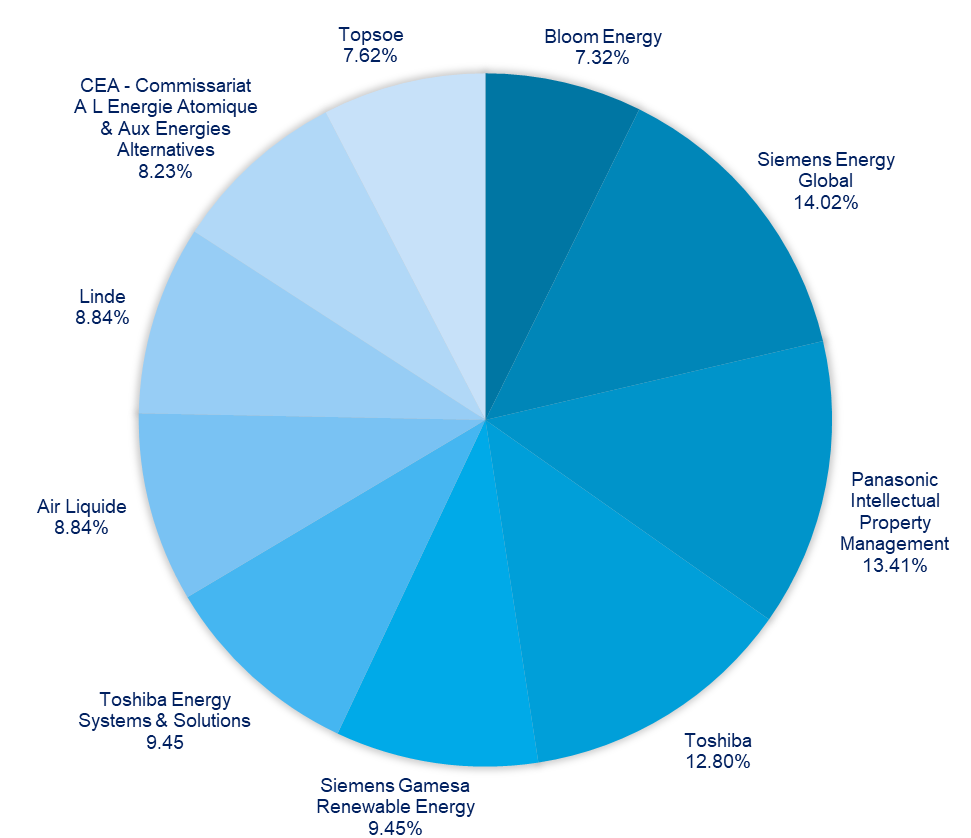Green hydrogen innovation and patent trends
Green hydrogen is a promising clean energy carrier and a potential solution for the decarbonisation of “hard-to-abate” sectors, such as heavy industry (for example, petrochemicals and ammonia) and transportation (for example, aviation and shipping). With global demand for green hydrogen projected to increase to 2050, investment and innovation in the green hydrogen space will be essential to meet this demand.
Types of hydrogen
Hydrogen is often categorised in terms of the process by which it is produced. Three main types of hydrogen are “grey”, “blue”, and “green”.
Grey hydrogen and blue hydrogen are produced by steam reforming, which involves using steam and hydrocarbons (typically methane) to generate hydrogen and carbon dioxide. Hydrogen produced by steam reforming is referred to as “grey” when the carbon dioxide is released into the atmosphere and “blue” when the carbon dioxide is captured and stored.
Green hydrogen is produced by the electrolysis of water using renewable energy sources. This involves using an electrochemical reaction to split water into hydrogen and oxygen, without emitting carbon dioxide. As such, green hydrogen is the most environmentally sustainable type of hydrogen.
While green hydrogen production currently accounts for a minor proportion of total hydrogen production, green hydrogen is expected play a valuable role in the transition to net-zero. However, various challenges associated with green hydrogen remain, such as its high costs of production, transportation, and storage, and the need for infrastructural development. Innovation is essential to facilitate adoption of the technology.
Electrolyser technology
A marked increase in the production and deployment of electrolysers for water electrolysis will be required to meet the growing demand for green hydrogen. The main types of electrolyser technology are:
- Alkaline electrolysis cells (AECs). This employs an alkaline electrolyte solution to conduct ions in the electrolysis process and operates at moderate temperatures, typically from 60°C to 80°C.
- Polymer emembrane (PEM) electrolysis. This uses a solid polymer electrolyte membrane to separate hydrogen and oxygen and operates at low temperatures, typically from 50°C to 80°C.
- Solid-oxide electrolysis cells (SOECs). This employs a solid oxide electrolyte and operates at high temperatures, for example from 700°C to 830°C. High temperatures help to drive the water electrolysis reaction, which reduces the power consumption per unit of hydrogen generated and improves production efficiency.
SOEC technology is new compared to PEM and AEC, which have been used for many years. The potential efficiency improvement associated with SOECs has resulted in significant interest in this technology. Further efficiency improvements can be realised by locating SOECs in environments where heat is already generated, for example, industrial or nuclear sites.
Patent activity
There has been a marked increase in patent activity related to green hydrogen over the last decade, as shown in figure 1 below. The data show that the number of patent family publications has increased year-on-year from 336 in 2014 to 4834 in 2024, which represents an approximately fourteen-fold increase.

The top ten applicants by number of patent family publications were predominantly Chinese universities or research institutes. Interestingly, a different trend was apparent when considering patent family publications including a European entry, as shown in figure 2 below. For such patent families the top ten applicants were largely multinational companies. The data suggest that many of the patent families belonging to Chinese applicants serve to protect the domestic market and do not cover other jurisdictions.

Green hydrogen is a rapidly-developing field and is expected to play an important role in the transition to net zero. There is great potential for impactful innovation in all areas relating to green hydrogen, from electrolysers and storage to scale up and infrastructure. To realise the potential of green hydrogen continued investment and research and development are essential. For green hydrogen innovators, patents will play a key role in protecting their technology and recouping their investment.
